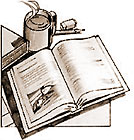
Atlas F1 Columnist
JUAN PABLO MONTOYA
By Christopher Hilton
Published by Haynes
Given author Christopher Hilton's modus operandi, the only surprise about this new biography of Juan Pablo Montoya is that it did not come out sooner. Kimi Raikkonen is probably next.
Hilton appears to have an enviable turnaround rate when it comes to producing books, but quantity often comes at the expense of quality. And frankly, this book is, well, not bad, but... bland.
Montoya is among the most interesting and charismatic drivers to have landed in Formula One over the past few seasons, and indeed this quality is one that is used as a selling point on the book's blurb. To have written an account of Montoya's life and so completely failed to capture any of this is no mean feat, and yet this is exactly what Hilton has managed to do.
Indeed, it is probably unfair to refer to this book as a biography, because the degree to which the reader is revealed anything of Montoya as a person is minuscule. Instead, it is perhaps more of an annotated account of the spirited Colombian's career to date.
Factually, it seems to be pretty much on the mark, although some of Hilton's interpretations of situations or data sometimes seem a little convenient. This passage offers one example:
"...the anticipation generated by Montoya's arrival was straightforward: could he take on Michael Schumacher and, in doing that, revive the excitement of Grand Prix racing? Consider. Although Mika Hakkinen took the world title in 1998 and 1999, the '99 championship was inherited because Schumacher broke his leg at Silverstone and Hakkinen only won from Eddie Irvine in the other Ferrari by two points." (p. 118)
That such a short-sighted and simplistic assessment of the 1998 and 1999 championships could come from an author who has been around the traps as long as Hilton has is mindboggling.
Of more interest was the account of Montoya's earliest years in racing, particularly his season competing in Formula N in Mexico – a campaign which, as Hilton correctly assesses, is all but unknown to F1 fans outside that part of the Americas.
Also worthwhile is some of the interview material, particularly that which examines Montoya's career in South America, although the absence of any original quotes from Juan Pablo himself – or, indeed, anybody at Williams – is notable.
As disappointing as that is, it's not especially unusual for a famous person to remove themselves from any involvement in a book about them, particularly if there is an 'authorised' biography just around the corner. (Whether that is the case here, I don't know). On that count, then, Hilton can be excused.
The thing that really lets this book down is that while you read it, you have the sensation that you have read it all before. Part of this is due to the fact that you probably have read it all before – Hilton draws heavily upon such publications as Formula One magazine, Autosport, and F1 Racing. These are probably the three biggest-selling English-language F1 magazines that you'll find in print, so how such a heavy dependence upon them translates into value for money for the reader is questionable.
But the other reason it seems so familiar is that it is so formulaic. This book is virtually identical to innumerable other hastily-produced racing biographies out there, books that differ from one another only in the names and dates. Montoya's life is plotted out car-by-car, race by race.
Away from the track, we learn virtually nothing of him. One suspects that the reason for this is that when it comes to the crunch, the author does not know Montoya – and I mean, really know him – much better than we do. This is not to say that the author and subject are not acquainted. No doubt they have met, perhaps they bump into each other at races and whatnot regularly. But does Hilton really understand Montoya? If he does, then why couldn't he communicate it? And if he doesn't, then what hope has the reader got? This aspect of the book – the failure to distinguish Montoya from any other successful driver out there – is also evident in some of the interview material.
Hilton's interviewees tell us, with monotonous regularity, that Montoya is determined. No doubt he is. But so is Fernando Alonso, and Kimi Raikkonen, and Mark Webber, and every other driver of Montoya's generation that is trying to perform at the top level. So what is it that makes Montoya what he is? In this case, we never find out.
This is not the kind of book you'd take on a long flight. It clocks in at a touch under 140 pages of text, printed nice and large, and interspersed with loads and loads of huge pictures. The actual time required to read this cover to cover is not great, which raises further questions over whether you'd shell out around $20.00 USD for the privilege. This is very much a book for the die-hard Montoya fans - especially the less discerning ones. Nevertheless, it will probably sell by the thousand...
Please Contact Us for permission to republish this or any other material from Atlas F1.
|
Click here to purchase this book from the Atlas F1 Bookstore
Volume 9, Issue 18
Atlas F1 Exclusive
Exclusive Interview with Mark Webber
The Coming Man
Articles
Season in the Sun
2003 Spanish GP Preview
2003 Spanish GP Preview
Spanish GP Facts & Stats
Columns
The Fuel Stop
The F1 Trivia Quiz
Bookworm Critique
On the Road
Elsewhere in Racing
The Weekly Grapevine
> Homepage |

